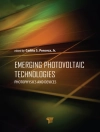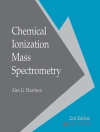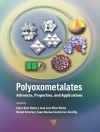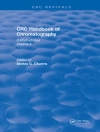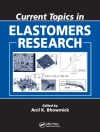Material Characterization using Electron Holography
Exploration of a unique technique that offers exciting possibilities to analyze electromagnetic behavior of materials
Material Characterization using Electron Holography addresses how the electromagnetic field can be directly visualized and precisely interpreted based on Maxwell’s equations formulated by special relativity, leading to the understanding of electromagnetic properties of advanced materials and devices. In doing so, it delivers a unique route to imaging materials in higher resolution.
The focus of the book is on in situ observation of electromagnetic fields of diverse functional materials. Furthermore, an extension of electron holographic techniques, such as direct observation of accumulation and collective motions of electrons around the charged insulators, is also explained. This approach enables the reader to develop a deeper understanding of functionalities of advanced materials.
Written by two highly qualified authors with extensive first-hand experience in the field, Material Characterization using Electron Holography covers topics such as:
- Importance of electromagnetic fields and their visualization, Maxwell’s equations formulated by special relativity, and de Broglie waves and wave functions
- Outlines of general relativity and Einstein’s equations, principles of electron holography, and related techniques
- Simulation of holograms and visualized electromagnetic fields, electric field analysis, and in situ observation of electric fields
- Interaction between electrons and charged specimen surfaces and interpretation of visualization of collective motions of electrons
For materials scientists, analytical chemists, structural chemists, analytical research institutes, applied physicists, physicists, semiconductor physicists, and libraries looking to be on the cutting edge of methods to analyze electromagnetic behavior of materials, Material Characterization using Electron Holography offers comprehensive coverage of the subject from authoritative and forward-thinking topical experts.
Tabella dei contenuti
PART I
THEORY AND PRINCIPLES
1.1 Importance of electromagnetic field and its visualization
1.2 Maxwell?s equations formulated by special relativity
1.3 de Broglie waves and wave function
1.4 Outlines of general relativity and Einstein?s equations
1.5 Principles of electron holography
1.6 Related techniques
1.7 Simulation of holograms and visualized electromagnetic field
PART II
APPLICATION
2.1 Electric field analysis
2.2 In situ observation of electric field
2.3 Magnetic field analysis
2.4 In situ observation of magnetic field
2.5 Control and visualization of collective motions of electrons
2.6 Interaction between electrons and charged specimen surfaces
2.7 Interpretation of visualization of collective motions of electrons
Circa l’autore
Daisuke Shindo is Team Leader, RIKEN Center for Emergent Matter Science and Professor Emeritus, Tohoku University. He is Fellow of the Japan Institute of Metals and Materials, and also Fellow of Korean Society of Microscopy.
Takeshi Tomita developed various instruments of electron microscopes, especially electron guns and lens systems, at JEOL Ltd. for more than 40 years.


